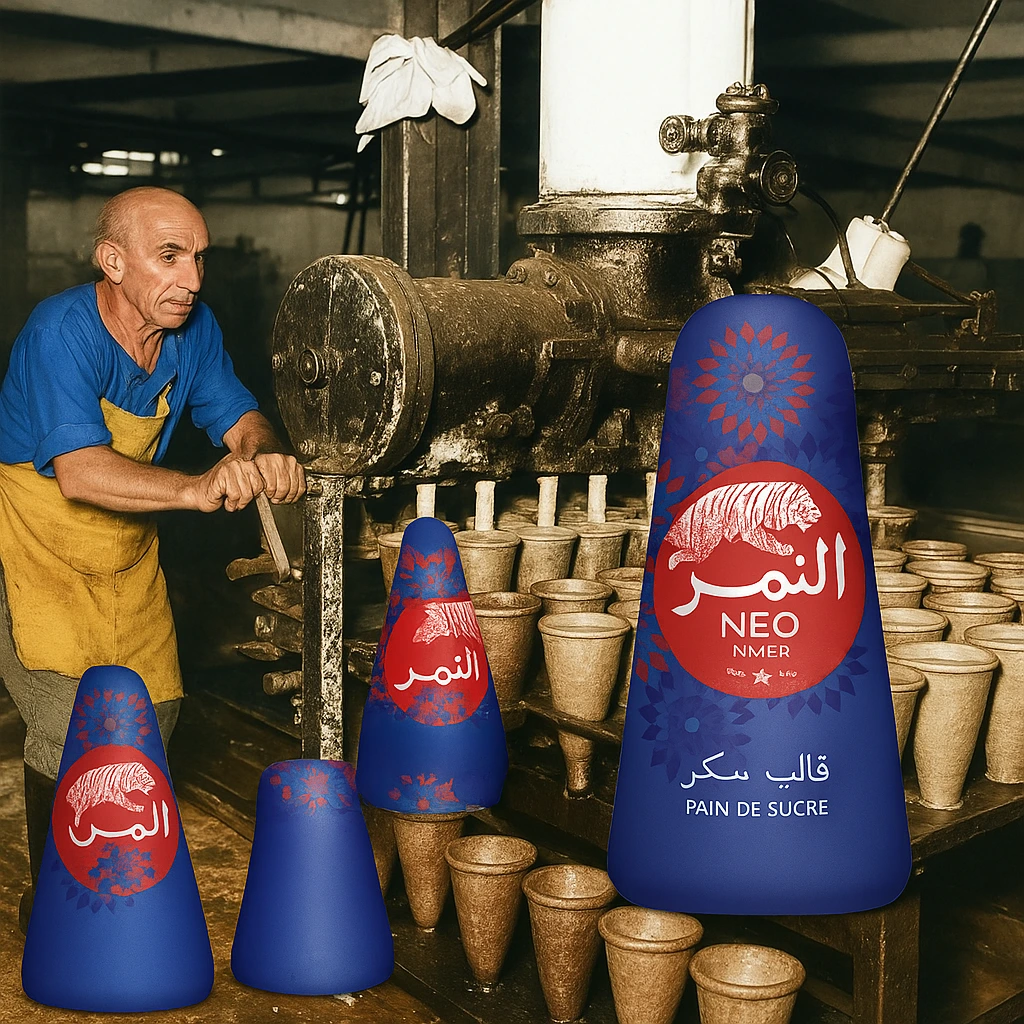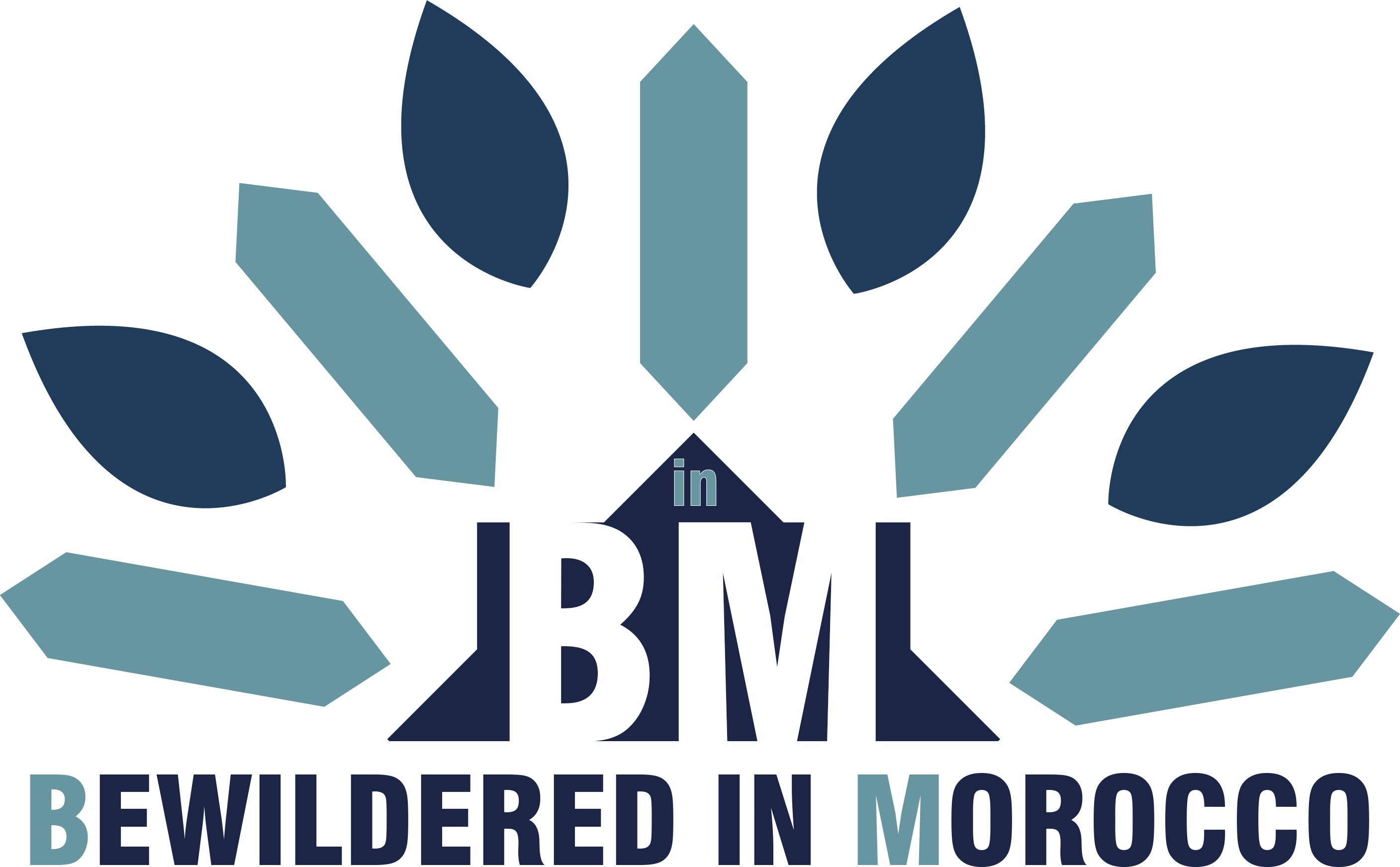
The Sweet Discovery That Changed My Moroccan Experience
Have you ever stumbled upon something so simple yet so deeply woven into the fabric of a culture that it stops you in your tracks? That happened to me during my time in Morocco when I discovered Pain de Sucre, the iconic Moroccan sugar loaf.
I remember the first time I saw one in a small shop in Fez. The shopkeeper noticed my curious glance and smiled knowingly. "This is our traditional sugar," he explained, pointing to the cone-shaped white block wrapped in colorful paper. Little did I know that this simple sweet discovery would open a window into Moroccan culture that no guidebook had mentioned.
What Exactly Is Pain de Sucre?
Pain de Sucre (meaning "sugar loaf" in French) is Morocco's traditional form of sugar that comes in a distinctive cone shape. It's not just any sweetener – it's a tradition that has been part of Moroccan life since 1929! Imagine, almost a century of history packed into this giant sugar cone.
Unlike the granulated sugar most of us are familiar with, Pain de Sucre is a solid, compressed cone of white sugar crystals. The sizes vary, but most are about 20-30 cm tall – an impressive sight when you first encounter one.
The Cultural Significance of Moroccan Sugar Loaf
During my travels across Morocco, from busy Marrakech souks to quiet mountain villages in the Atlas, I noticed these sugar cones everywhere. Each time I asked about them, Moroccans would light up, eager to explain their importance.
A Symbol of Hospitality
In Morocco, hospitality isn't just a nice gesture – it's a fundamental cultural value. And at the center of this hospitality ritual stands the famous mint tea, sweetened with Pain de Sucre.
I was invited to a family home in Chefchaouen, where my host Mohamed carefully broke pieces from his sugar loaf to prepare tea. "The sugar is as important as the mint," he told me. "Without good sugar, the tea loses its soul."
The way Moroccans offer tea sweetened with Pain de Sucre is more than just refreshment – it's a profound gesture symbolizing generosity, respect, and a warm welcome. In a country where hospitality runs deep, this sweetener becomes something sacred.
A Traditional Gift with Deep Meaning
What surprised me most was learning that Pain de Sucre is considered a prestigious gift in Moroccan culture. During special occasions like engagements, house visits, or festivals, Moroccans often present these sugar cones as cherished gifts.
"When my daughter got engaged," shared Fatima, a woman I met in a Rabat market, "the family of her fiancé brought a beautiful large Pain de Sucre wrapped in colorful paper with ribbons. It was their way of showing respect to our family."
Seeing these sugar loaves presented as meaningful gifts really brought their cultural significance to life for me. It's not just about sweetness – it's about connection, tradition, and respect.
The Art of Using Pain de Sucre
What fascinates me most about Moroccan traditions is how they turn everyday activities into beautiful rituals. The use of Pain de Sucre is no exception.
The Traditional Breaking Ceremony
In many Moroccan homes, I watched as hosts performed what seemed like a small ceremony when preparing tea. Armed with a special hammer or tool, they carefully chiseled off pieces from the solid sugar cone. Each strike was precise, breaking off just the right amount needed for the teapot.
In one mountain village near Ifrane, an elderly man showed me his grandfather's sugar hammer – a beautifully decorated metal tool passed down through generations. "This is how we've always done it," he said proudly as he demonstrated the technique.
Storage and Preservation
Once broken, the precious sugar crystals are often stored in ornate metal boxes or special containers. These decorative sugar boxes are themselves works of art, with intricate designs and patterns typical of Moroccan craftsmanship.
In a small workshop in Essaouira, I watched artisans creating these metal sugar boxes by hand. "Each family has at least one special box for their sugar," explained the craftsman. "Some are passed down as heirlooms."
The Sweet History of Pain de Sucre in Morocco
The story of Pain de Sucre in Morocco is fascinating and reveals much about the country's history and development.
A Century-Old Tradition
Pain de Sucre has been produced locally in Morocco since 1929. Before that, sugar was an imported luxury that only wealthy Moroccans could afford. The establishment of local sugar production changed Moroccan daily life dramatically, making this essential ingredient available to everyone.
During my visit to one of Morocco's sugar factories near Casablanca, I learned how the traditional cone shape was originally a practical solution for transport and storage. The shape made the sugar easy to stack and prevented moisture from ruining it.
The Connection to Mint Tea History
No story about Pain de Sucre would be complete without mentioning its inseparable partner – Moroccan mint tea. The combination of these two elements forms the cornerstone of Moroccan social life.
"Our grandparents remember when sugar became more common," told me Hassan, a tea shop owner in Tangier. "It transformed tea from a bitter medicine to the sweet pleasure we know today. The Pain de Sucre shape became synonymous with celebration and abundance."
My Personal Experience with Pain de Sucre
I'll never forget my first attempt at breaking a sugar cone. I was staying with a family in a small village near Ouarzazate, and my host Youssef insisted I try preparing the tea myself.
He handed me the special hammer and positioned the sugar cone on a metal tray. "Not too hard," he advised with a smile. My first strike was too gentle, barely making a dent. The second was too hard, sending sugar pieces flying across the table, causing everyone to laugh.
"It takes practice," Youssef reassured me. "Even Moroccan children have to learn."
By the end of my stay, I had somewhat mastered the technique, though my hosts would always politely readjust the amount I had broken off. Too much or too little sugar in the tea is equally frowned upon in Morocco!
Beyond Sweetness: What Pain de Sucre Teaches Us
My journey with Moroccan Pain de Sucre was a beautiful reminder that everyday items can carry extraordinary stories. This cone-shaped sugar is more than an ingredient; it's:
A Historical Marker
Produced locally since 1929, Pain de Sucre offers a taste of Morocco's modern history. It represents the country's industrial development and growing self-sufficiency during the 20th century.
As I traveled through different regions, I noticed subtle variations in how people spoke about their sugar loaves. In northern cities like Tetouan, older residents remembered stories from their parents about when sugar was still rare and precious.
The Heart of Hospitality
Pain de Sucre is central to the ritual of mint tea, the cornerstone of Moroccan social life. In every home, shop, or gathering I visited, the preparation of tea using the sugar cone created moments of connection and conversation.
I remember sitting in a carpet shop in Fez for hours, discussing everything from politics to philosophy over glasses of sweet mint tea. The shopkeeper continuously replenished our glasses, chipping away at his sugar cone for each fresh batch.
A Symbol of Connection
Given as a gift, Pain de Sucre strengthens bonds between families and friends, embodying respect and generosity. I witnessed this firsthand when my neighbor in Marrakech received visitors who brought an elaborately wrapped sugar cone as a gift.
The care with which she received it, the place of honor it was given in her home, and the way she spoke about the gesture all highlighted the social importance of this sweet tradition.
A Practical Tradition
The unique way Pain de Sucre is broken and stored showcases Moroccan ingenuity and adherence to custom. Even in modern homes with every convenience, many Moroccans maintain this traditional approach to sweetening their tea.
In a busy family home in Rabat, I saw how the mother kept both regular granulated sugar for cooking but reserved the special Pain de Sucre for tea and guests. "The taste is different," she insisted. "And more importantly, the feeling is different."
Where to Find Pain de Sucre During Your Visit to Morocco
If you're planning a trip to Morocco and want to experience this sweet tradition firsthand, here's my advice on where to find authentic Pain de Sucre:
Traditional Markets (Souks)
Every Moroccan souk has vendors selling different sizes of sugar loaves. In Marrakech's famous Medina, head to the section where locals shop (away from the tourist areas) to find the most authentic options.
During my market explorations, I found that prices vary depending on the size and quality. Don't be afraid to ask questions – vendors are usually happy to explain the differences.
Specialty Food Shops
In major cities like Casablanca, Rabat, and Tangier, look for specialty food shops that sell traditional Moroccan ingredients. These often have a selection of Pain de Sucre cones in various sizes, sometimes in decorative packaging that makes them perfect souvenirs.
Supermarkets
For a more convenient option, even Moroccan supermarkets carry Pain de Sucre, though usually with less ceremony than traditional shops. The advantage here is fixed prices if you're not comfortable with bargaining.
Taking the Tradition Home: Pain de Sucre as a Souvenir
One of my favorite souvenirs from Morocco was a medium-sized Pain de Sucre along with a traditional metal sugar box and a small hammer. This complete set allowed me to recreate the Moroccan tea experience back home.
If you decide to bring some home, here are some tips:
- Choose wisely: Smaller cones are easier to pack without breaking.
- Pack carefully: Wrap your sugar loaf in clothes or bubble wrap to prevent damage.
- Consider customs: Most countries allow sugar imports for personal use, but check your local regulations.
- Complete the experience: If possible, buy a traditional sugar hammer and box to go with your cone.
The Future of Pain de Sucre in Modern Morocco
Like many traditional products worldwide, Pain de Sucre faces challenges in modern times. Younger Moroccans in urban areas often opt for convenient granulated sugar, and some cafés have switched to sugar cubes or packets.
However, during my recent visits, I've been heartened to see a revival of interest in traditional products among young, educated Moroccans. In trendy cafés in Casablanca and Marrakech, some establishments proudly display Pain de Sucre as part of their commitment to authentic Moroccan heritage.
"It's part of who we are," explained Karim, a young café owner in Marrakech's Gueliz district. "My grandmother would never accept tea made without proper sugar from the cone. Now my customers appreciate that we keep this tradition alive."
A Sweet Conclusion to Our Journey
My discovery of Pain de Sucre transformed how I experienced Morocco. What started as curiosity about a cone-shaped sweet became a window into the country's hospitality, history, and daily rituals.
Watching the traditional way Moroccans break down this solid cone and use the precious sugar crystals to sweeten countless glasses of fragrant mint tea connected me to a ritual that spans generations. It's a practice that binds the past with the present – a tangible piece of history used daily.
So the next time you enjoy a cup of tea, perhaps take a moment to think about the stories and traditions that might be swirling within it. The journey of Moroccan Pain de Sucre is a testament to how culture, history, and simple sweetness can blend together beautifully.
Have you ever encountered unique food traditions during your travels that reveal deeper cultural meanings? Or have you experienced Moroccan hospitality and their famous mint tea? Share your experiences in the comments below – I'd love to hear your sweet discoveries!
